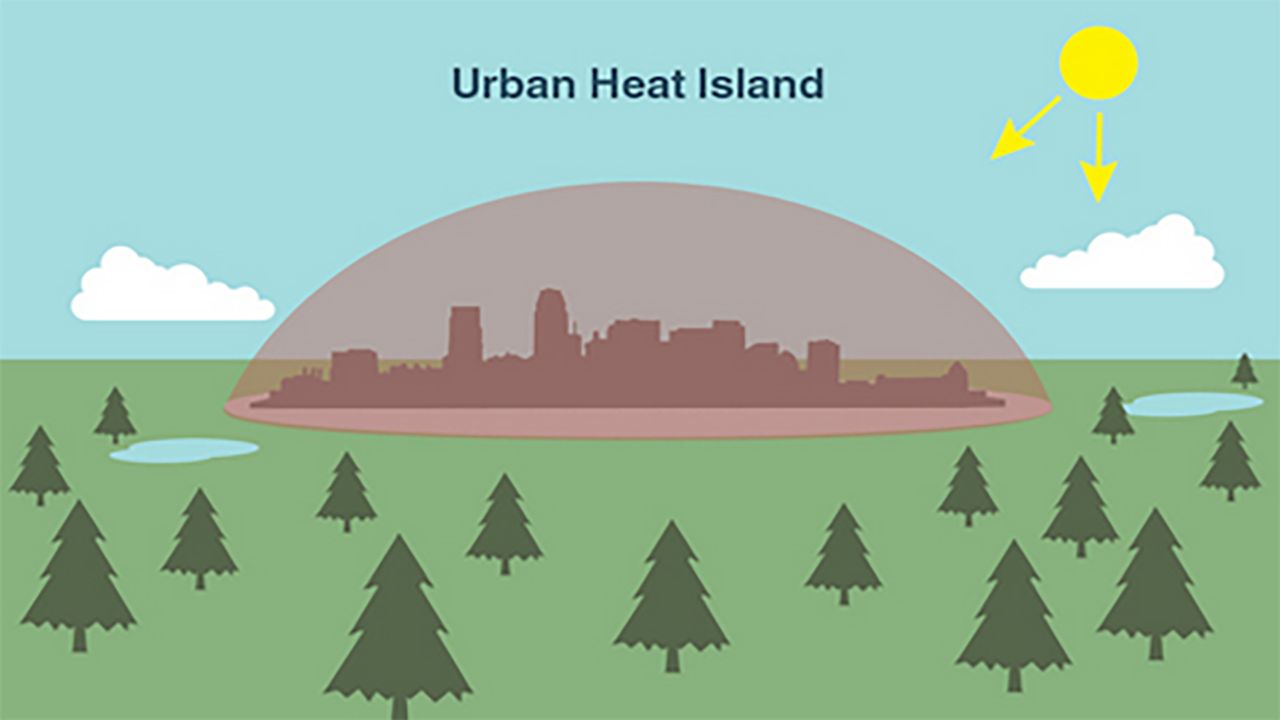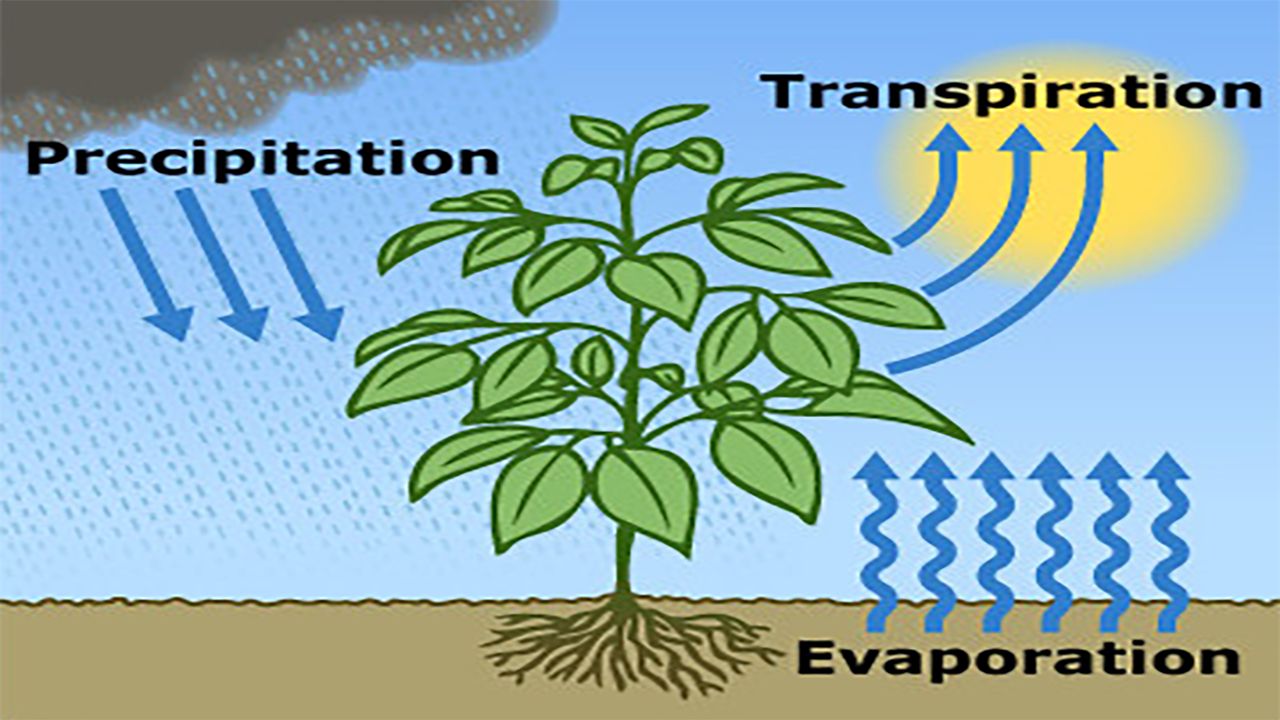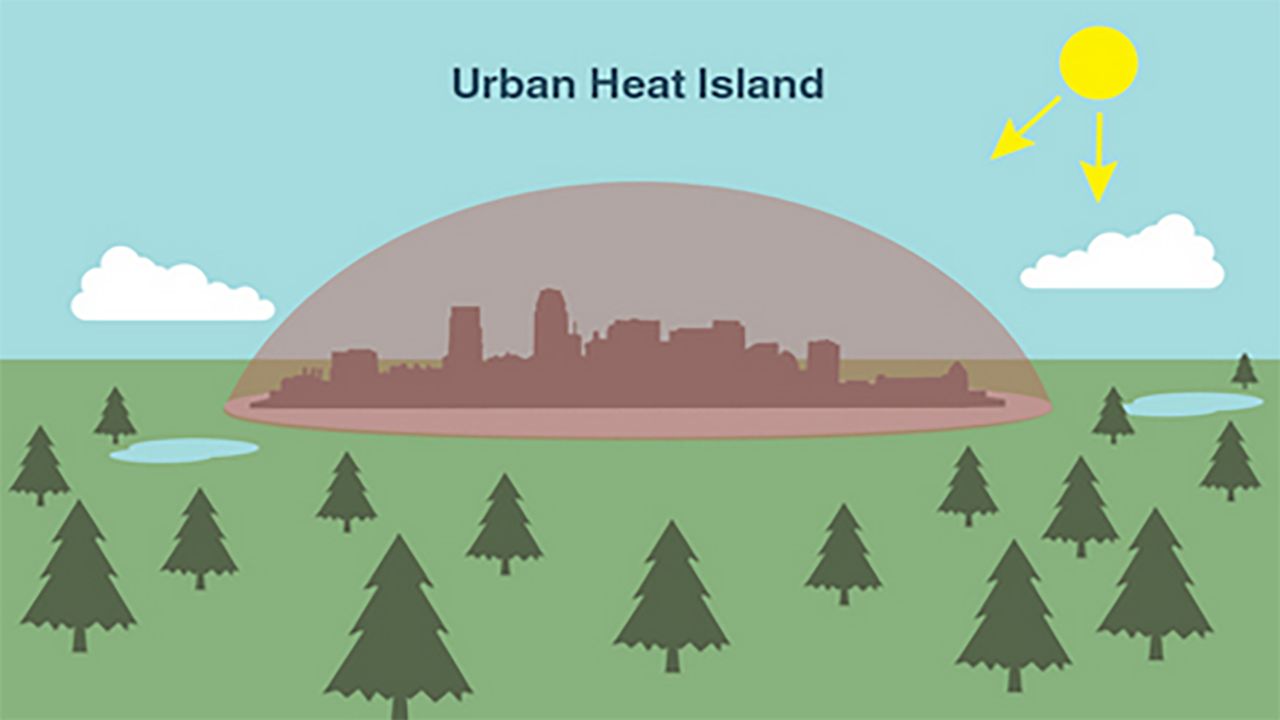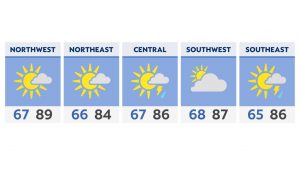What is a heat island?

Courtesy of NASA/JPL-Caltech
Also referred to as an “urban heat island” or the “heat island effect”, a heat island is when a city or urban area is warmer than neighboring rural areas.
According to the United States Environmental Protection Agency (EPA), the temperature difference can be as great as 22 degrees.
Why does it happen?
The contrast in temperatures between urban and rural areas can be attributed to the different surface types in each of these locations and the ability of those surfaces to absorb and release heat.
In rural areas, vegetation tends to dominate the landscape. Vegetation contains moisture which naturally evaporates, a process known as transpiration.

Courtesy of usgs.gov
Much like humans sweat as a means to cool down, when plants transpire, they also lower their surface temperature and the temperature of the surrounding air.
In more developed locations such as cities, you’ll find more asphalt, cement, metals, etc. These materials are typically darker in color and are excellent absorbers of heat.
Additionally, these surfaces have no way to naturally cool down (like plants do when they transpire) which means the roads and buildings that make up cities, trap the heat and hold on to it longer.
Why does it matter?
Heat islands have consequences, many of which are not beneficial.
With hotter temperatures comes an increased need for electricity to power fans, air conditioners, etc. On a hot summer day, high demand can strain power grids and result in power outages, which at the very least, is an inconvenience.
With energy needs increasing due to warmer temperatures, pollutants increase as a byproduct of energy production. Air pollution has a direct impact on air quality, affecting our health.
Dehydration, respiratory issues, and heat stroke become concerns when temperatures skyrocket. Heat waves are only made worse by the existence of heat islands. The hotter it is, the greater the risk for the aforementioned ailments.
Can anything be done to prevent heat islands?
Cities can implement heat island mitigation strategies to lessen the impact.
By adding more trees and vegetation, a city is provided with more shade. It also enhances the evaporative cooling that takes place due to transpiration, lowering the overall temperature.
Real estate is usually limited in cities but rooftops have proven to be the perfect home for added vegetation. Rooftop gardens have grown in popularity in recent years. It’s a great alternative to what would otherwise be a typically darker, heat absorbent rooftop and generally underutilized space.
Another mitigation method involves using alternative building materials. “Cool roofs” and “cool pavements” are made with materials that reflect more sunlight and absorb less heat than what has been “traditionally” used.
A heat island isn’t exactly the paradise that the name implies. However, by being informed about this man-made phenomena, perhaps we can do better and get one step closer to being prepared.




